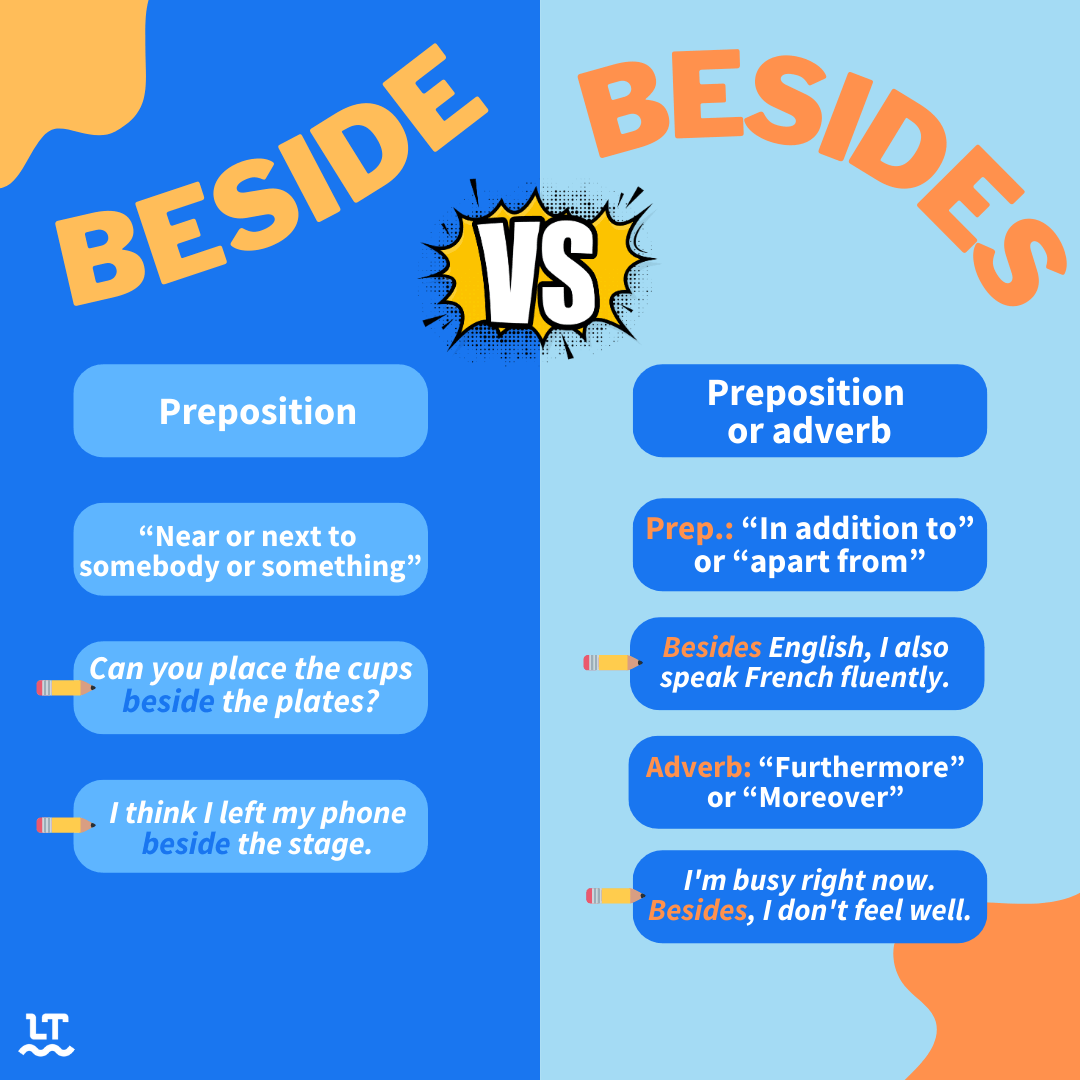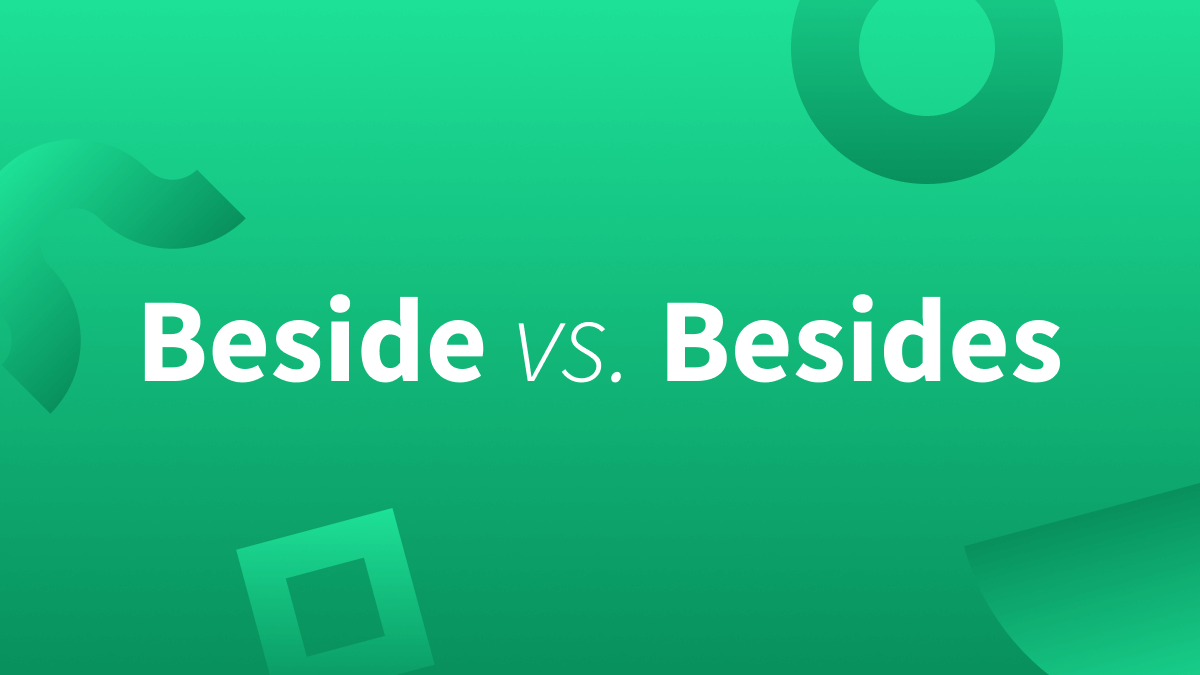Beside vs. Besides: Quick Summary
Beside is a preposition of place that means “close to” or “next to.”
- Can you place this beside the desk, please?
As an adverb, besides means “furthermore.” But as a preposition, it means “apart from” or “in addition to.
- I don’t want to go to the party. Besides, I have a lot of work to do.
- Besides cooking intricate entrées, Javier also likes baking sweet treats.
“Beside” and “Besides”: What’s the Difference?
The only obvious difference between beside and besides is that one ends with an “–s” and the other doesn’t.
But these two words have more distinctions, including what they mean and what part of speech they function as.
Below, we’ll go over everything you need to know about beside and besides so that you’ll never use them incorrectly in your writing ever again.
Let’s begin!
What Does “Beside” Mean and How Do You Use It in a Sentence?
Beside is a preposition that means “at the side of or next to somebody or something.” It’s used to reference a physical location or position.
My phone is beside the TV.
When I lost, my best friend sat beside me all night and supported me.
There’s a pond beside the farm that I like to swim in sometimes.
If you can replace “beside” with “next to” in a sentence, and it still conveys the same message, then you’re using it correctly.
I think there is more parking beside the store.
I think there is more parking next to the store.
What Does “Besides” Mean and How Do You Use It in a Sentence?
Besides can function as either a preposition or an adverb.
As a preposition, besides means “in addition to,” “apart from,” “other than” or “except.” When used as a preposition, it must be followed by a noun, pronoun, or noun phrase.
Besides photography, I also enjoy swimming, fishing, and reading.
Besides our taste in music, we really have nothing in common.
There was no one at the theater besides us.
As an adverb, besides is most commonly used to mean “furthermore” or “moreover.” Think of it as a more casual way of using these terms. It’s used to add more information to a sentence. When used in this sense, a comma follows (as demonstrated in the examples below).
The hotel is expensive and besides, it’s not close to the conference center.
I’m not hungry. Besides, I don’t like the food they serve here.
We’re going to make it on time. Besides, there are fifteen minutes of previews before the movie starts.
Is It “Beside the Point” or “Besides the Point”?
The correct spelling of this common English idiom is beside the point, not besides the point. When someone uses this expression, it means that something is “irrelevant to the current discussion or situation.”
I don’t know why you brought that up. That’s beside the point.
I don’t know why you brought that up. That’s besides the point.

Using “Beside” and “Besides” Correctly In Your Writing
Here’s what you have to remember to use beside and besides correctly:
- Beside (without the “–s”) references a physical location or position.
- Besides either means “in addition to,” “apart from,” “except,” or “moreover.”
Knowing how to use these words correctly is vital for effective communication. LanguageTool is a multilingual writing assistant that can help you communicate even more clearly by correcting errors, suggesting alternatives to overused phrases, and rephrasing your sentences. Why not give it a try? Besides, it’s free to use!

